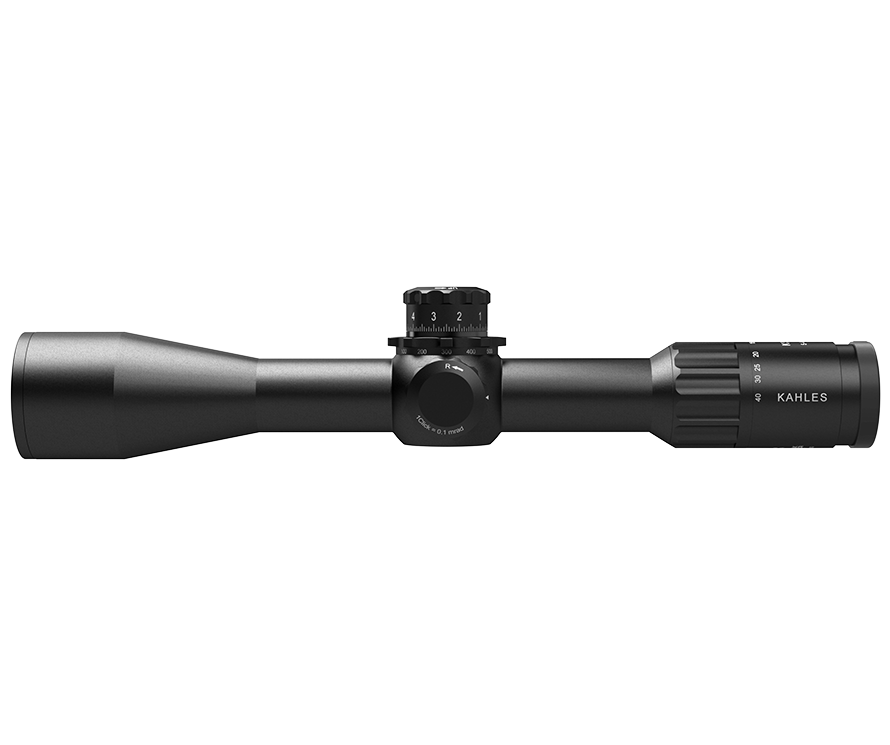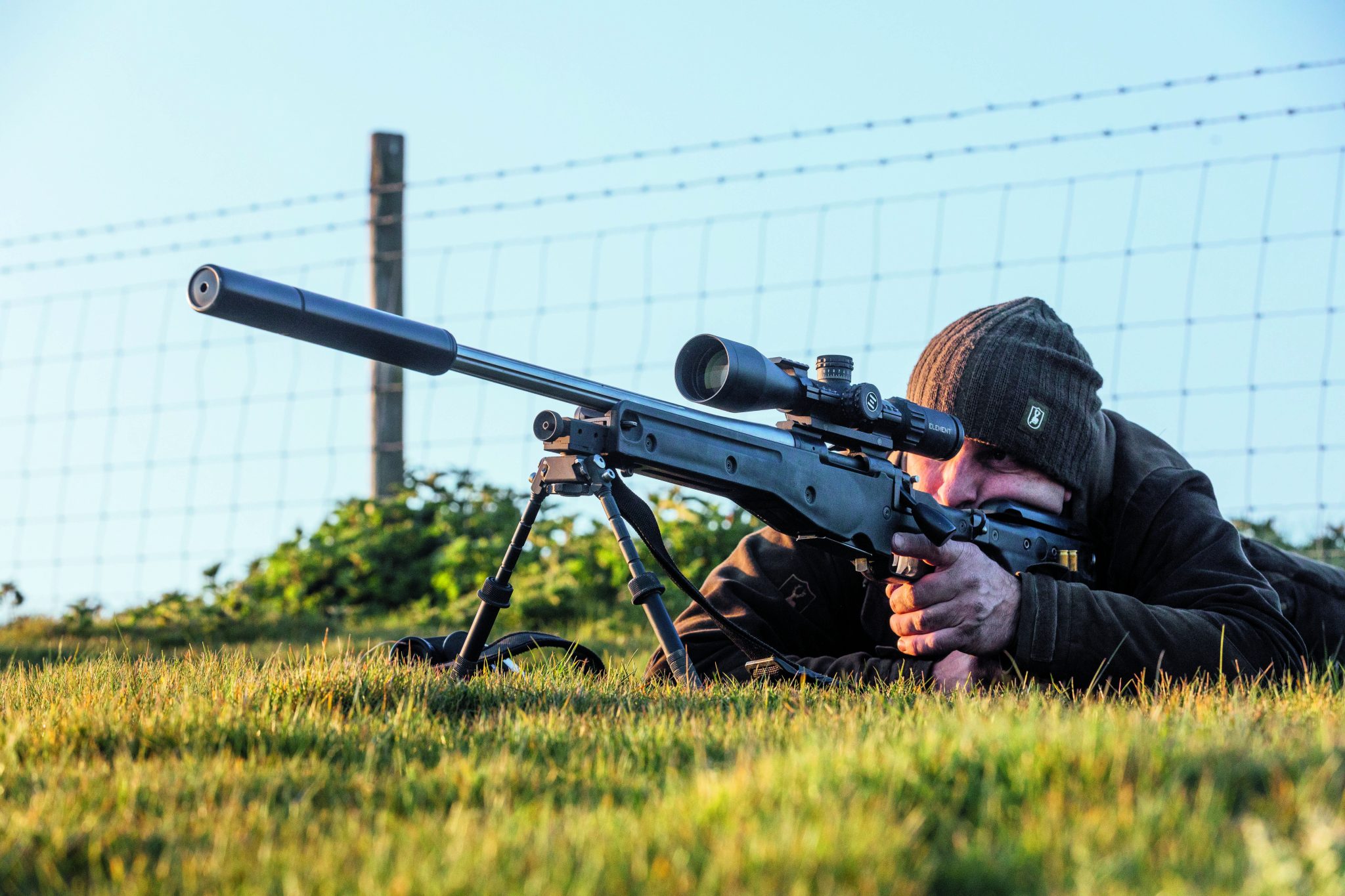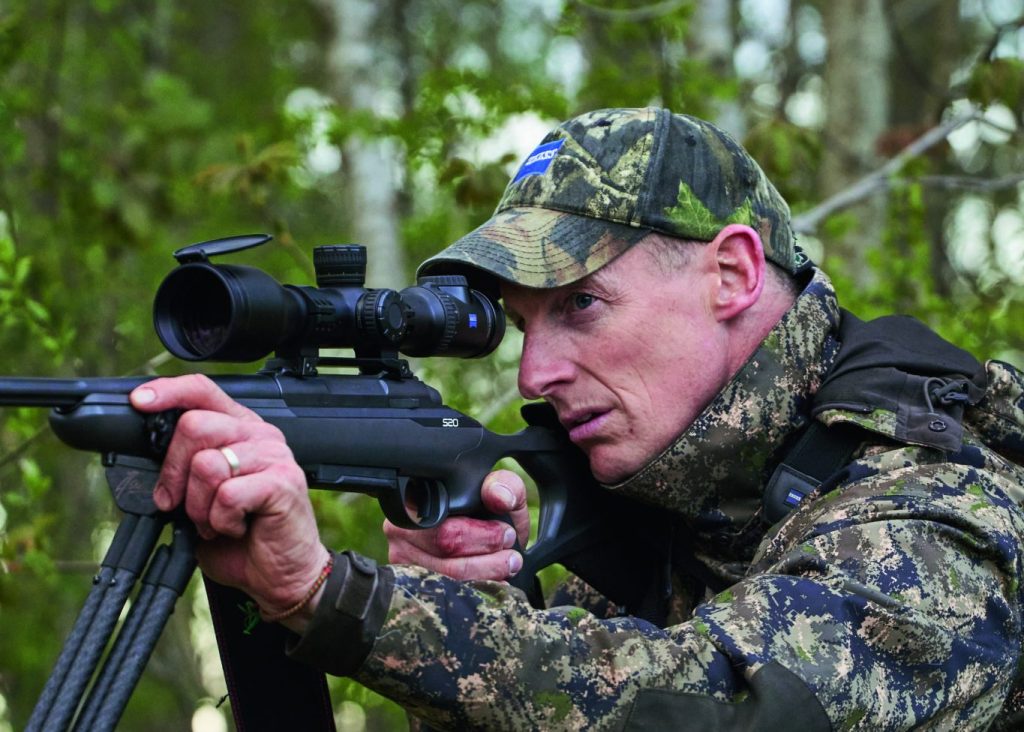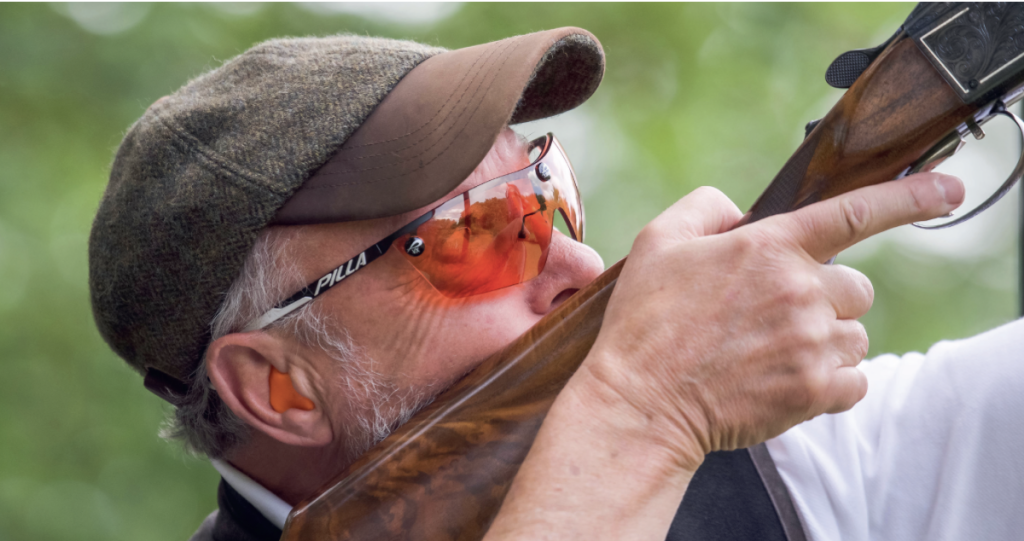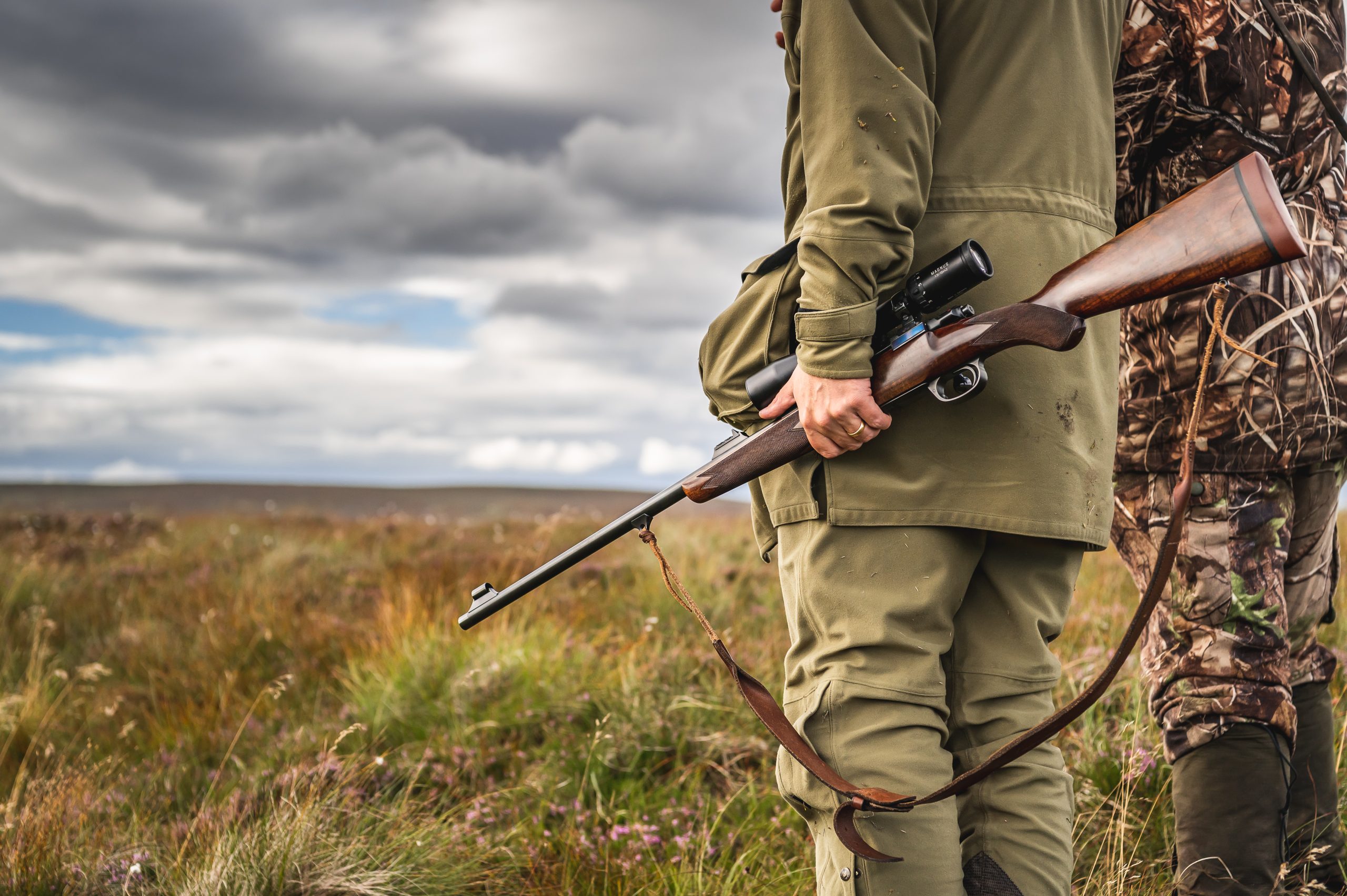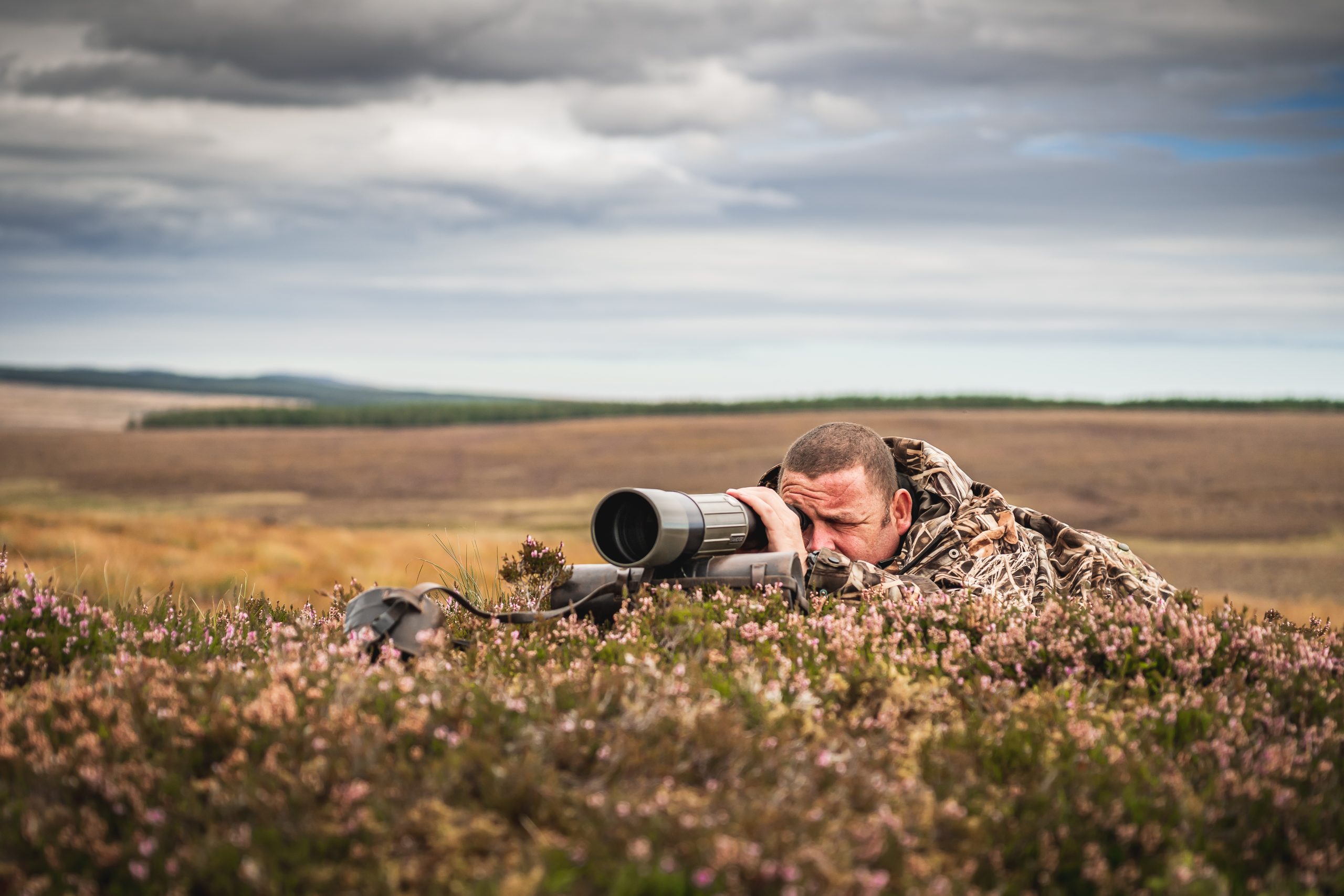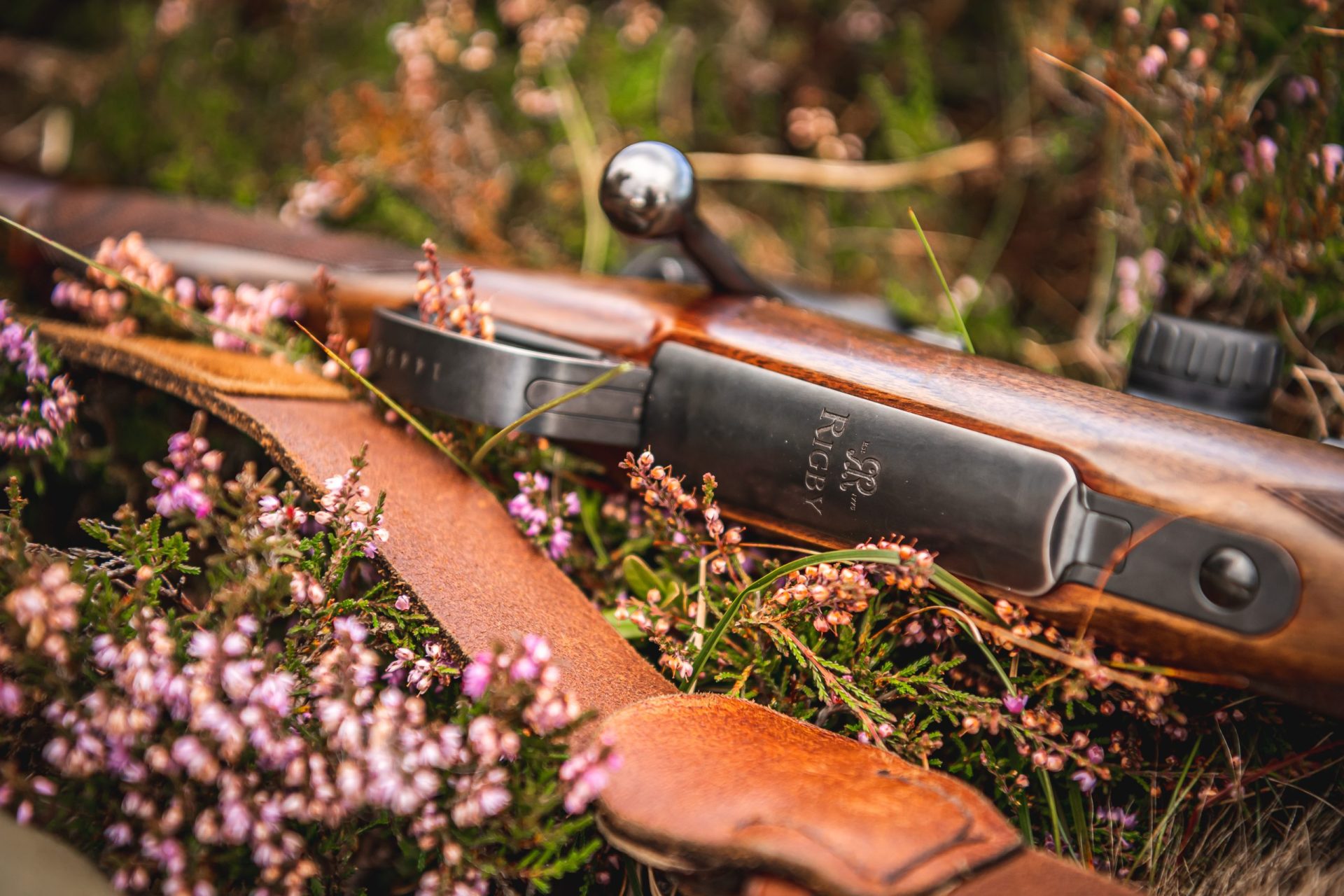Rifle
Shooting
.17 HMR rifle or .22 LR? Mark Ripley sets out to compare them for a bit of everyday pest control
Would you like to speak to our readers? We offer sponsored articles and advertising to put you in front of our audience. Find out more.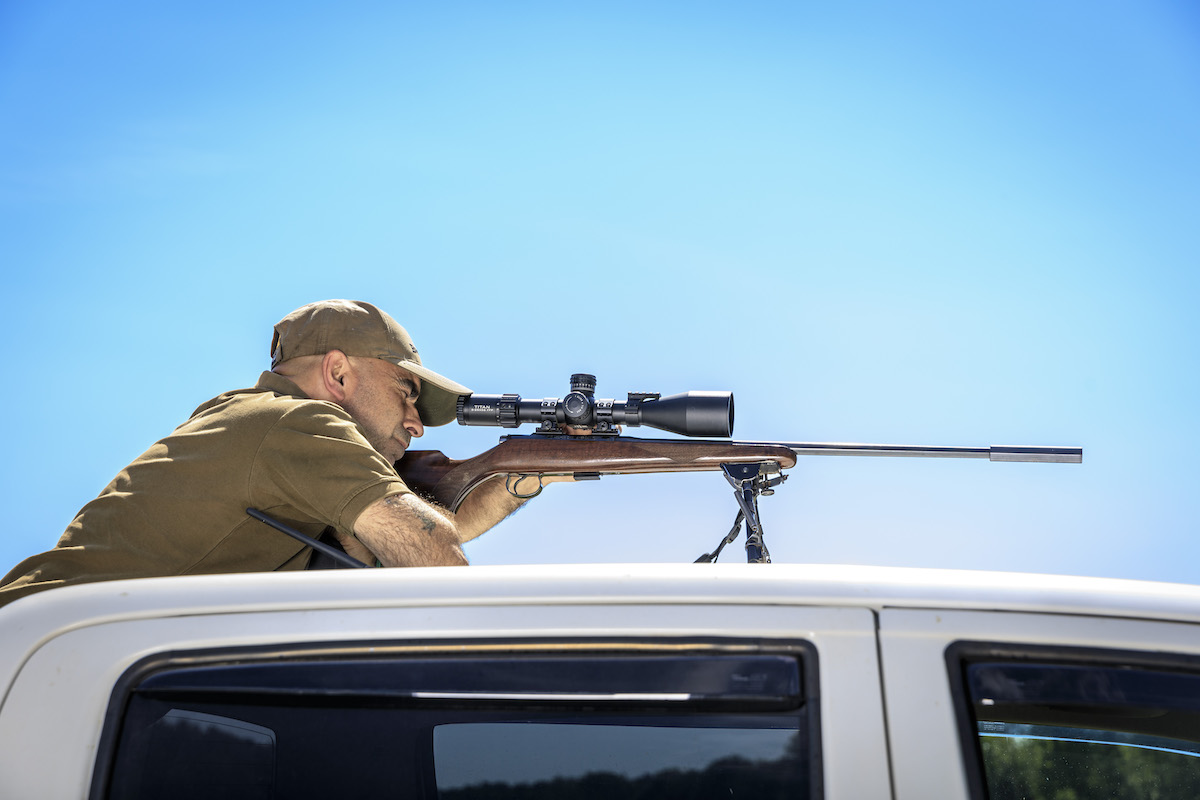 Mark Ripley, 17HMR v .22 Comparison
Mark Ripley, 17HMR v .22 Comparison
.17 HMR rifle or .22 LR?
The sound of the bullet whistling through the air for a split second before its impact was rather rewarding, as another rabbit was tumbled downrange. The last half-a-dozen bunnies at the far end of the green had become familiar with my tactics of walking alongside the high netting at the edge of the practice area to get to within .22 LR rimfire range and had taken to scarpering at the first sign of danger. (Read more on rimfires for rabbit control here.)
Now, however, I was surprising them, having set myself up on the clubhouse balcony some 200 yards away, with the supremely accurate .17 HMR. This was a tactic the bunnies hadn’t bargained for and I was taking out good numbers each time they broke cover. Every 20 minutes or so another would feel the coast was clear and be brave enough to hop out on to the lush green grass of the golf course — only to quickly fall victim to a well-placed shot.
Having previously owned a .17 HMR, I was already familiar with how effective it could be, but I hadn’t got on with the rifle itself. However, this latest offering, the Tikka T1x, was rekindling my love for the calibre with its flat shooting capabilities and tack-driving accuracy.
I’d armed myself with the Tikka as I was keen to compare the most popular two rimfire calibres, the .22 LR and the .17 HMR. There’s no doubt both have their pros and cons, and there are fans of both calibres, but with the increasing popularity of the .17 HMR, I was keen to see if the humble .22 LR still deserved a place in the gun safe. (Take a look at our list of the best gun safes.)
Cost of ammo
The first obvious factor to consider came early on when visiting C&H Weston in Brighton. It was one of the few shops close by that had any HMR ammunition in stock at that time and, on buying 100 rounds as well as some for the .22 LR, the cost difference was immediately apparent. The .17 HMR ammunition costs approximately three times that of the .22 LR.
Where the .17 HMR does come out on top against the .22 LR in terms of ammunition, though, is with ricochet. The .22 is renowned for bullets pinging off almost anything, then to be heard zinging off to goodness knows where. Yet the .17 HMR has a much lower risk, with the extremely fast and frangible bullets breaking up on almost anything they connect with. Incidentally, this does mean you need to make sure you have a clear flight path for a bullet, such as when shooting rabbits in the stubble or in foliage.
As another rabbit ventured on to the green, I again settled behind the rifle and took a head shot at a tad over 120 yards with little consideration for the distance. With the rifle zeroed at 100 yards, the bullet will need very little allowance out to 150 yards or so. (Read more on cartridges and calibres for pest control.)
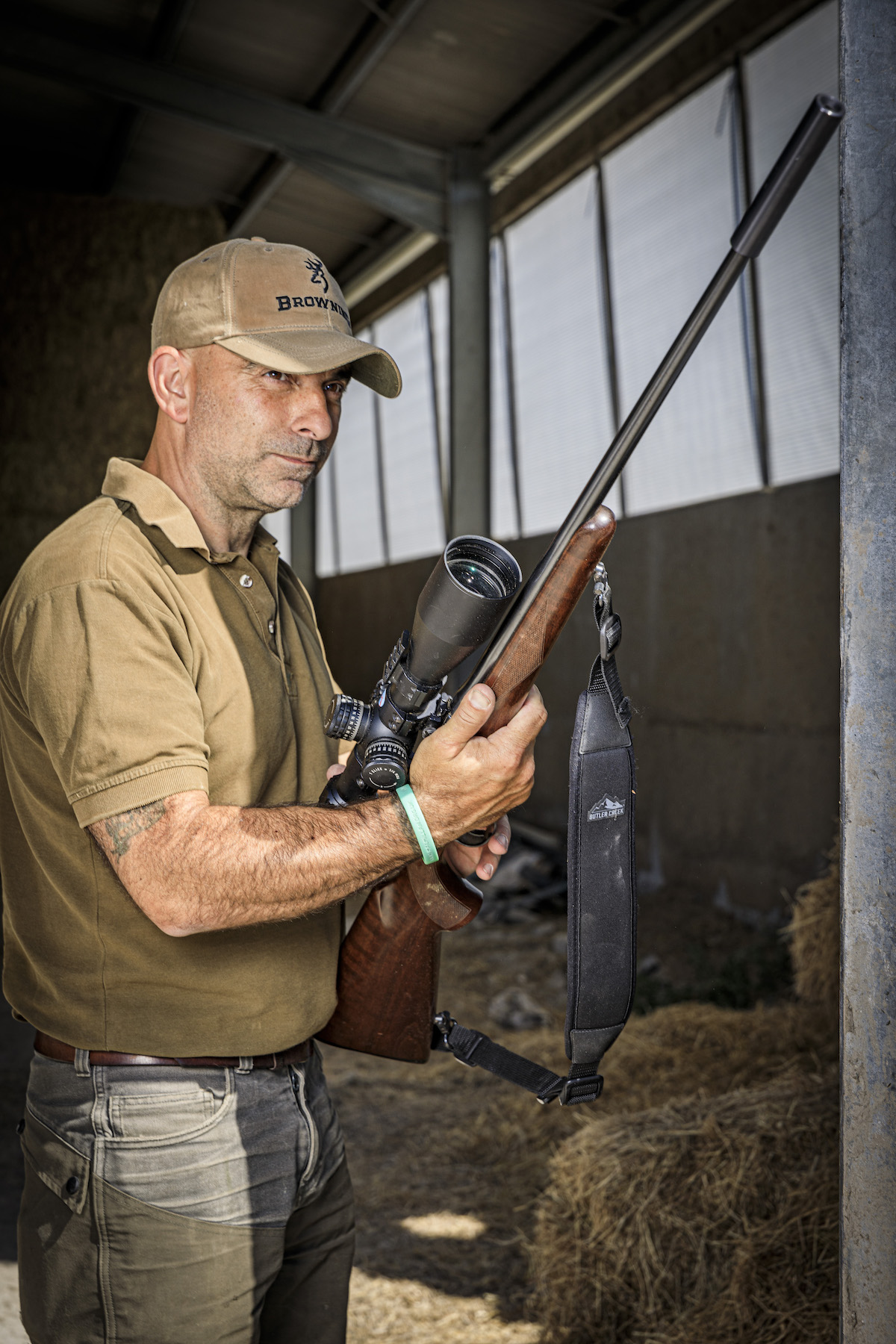
Mark Ripley sets out to compare a .17HMR with a .22 LR for a bit of everyday pest control
This is a different story for the .22 LR firing a bullet over twice as heavy. The drop is a lot more pronounced and, zeroed at 50 yards, it will start to need some careful consideration once you get out to 75 or 80 yards.
The limit for subsonic ammunition is realistically about 100 yards for reliable accuracy. Here, though, is where the .22 LR has an ace up its sleeve. You can also use high-velocity ammunition in the .22 and stretch this out to more like the ranges the .17 HMR offers with good accuracy. The trade off here is that, like the HMR, you will still get a bit of a crack as the bullet breaks the sound barrier. The .22 LR subsonic ammunition is intentionally kept below the speed of sound to keep the shot as close as possible to silent, which is that calibre’s biggest advantage.
It’s also often stated that the .17 HMR is useless in the wind, and yes, if you don’t allow for it, you will most likely miss, especially as the ranges increase. However, this is also true of the .22 LR. It’s simply that usually you are shooting at distances of less than 70 yards, where the wind has less time to have an effect on the bullet’s flight path. If you were using a .17 HMR at .22 LR ranges, the odds are you probably wouldn’t notice much difference.
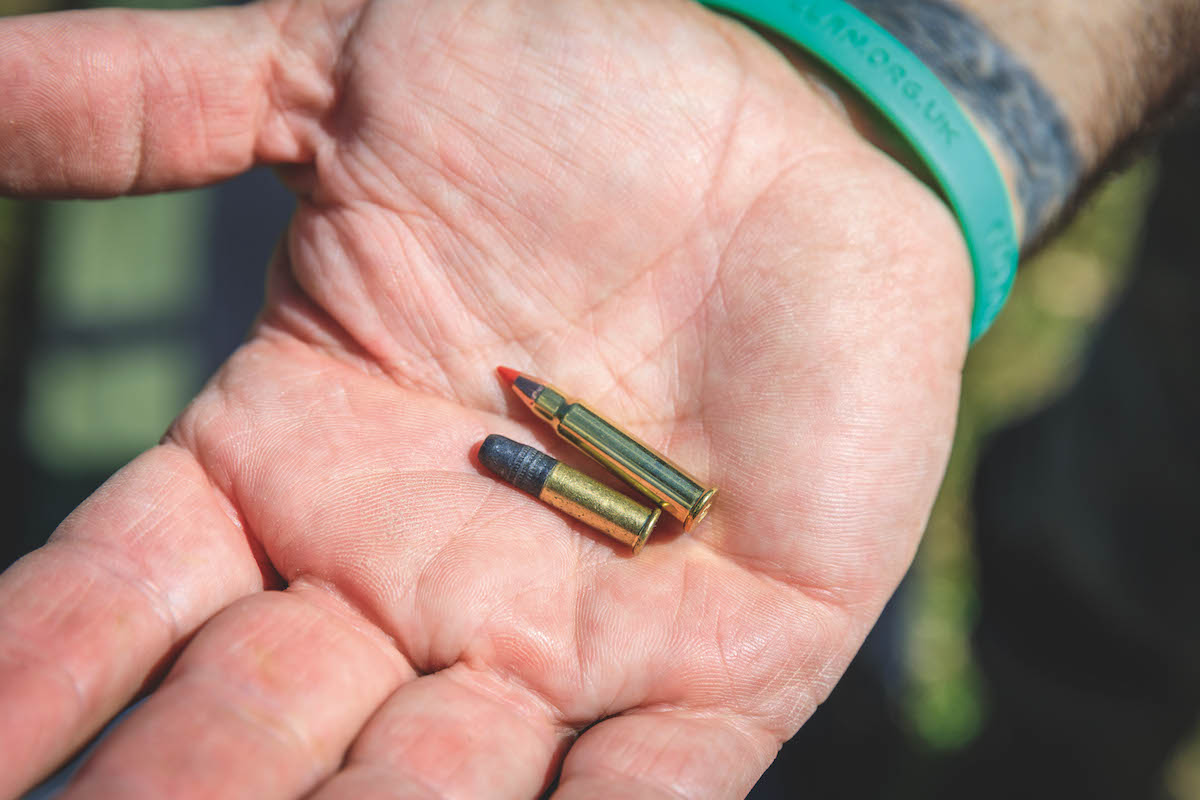
Rounds for both rifles are notably tiny
Drift
On the day I zeroed the HMR and checked zero on my own .22 LR — a now discontinued CZ 452 American — there was a crosswind of at least 10mph. Interestingly, at 50 yards, I had pretty much the same amount of horizontal drift with both rifles due to windage. Though this was only an observation at that time, rather than a conclusive test, it did make me wonder if it was much of a deciding factor between the two. I’m sure with some experience this could be allowed for.
Let’s not forget, this is a tiny rimfire bullet shooting out to 150 yards or more and not a centrefire, so you would expect it to get pushed around a bit in the wind; it’s a projectile, not a laser beam, after all.
Other than the extra cost of ammunition and perhaps a little extra meat damage due to its explosive nature, the only real drawback for me would be the noise. This isn’t likely to be an issue for the keeper looking for a ‘point and shoot’ rifle to keep in the truck for rabbits, squirrels, corvids or the odd closer-range fox on his rounds, but for pest control in sensitive areas this might be a problem.
In the past, I have done a few fox control jobs in urban areas, shooting them in gardens and parks. In such circumstances, the use of a near-silent .22 LR rifle is perfect with a sufficient backstop. On several occasions, I’ve despatched foxes in the gardens of terraced houses by shooting down into the garden from an upstairs window, at ranges of usually 20 or 30 yards, and using a bag or two of sand as a pre-baited backstop. The neighbours have been none the wiser to the entire event.
There’s also the argument that you can shoot more rabbits with a .22 LR because it’s so quiet it doesn’t scare off all the others, which to a degree is true. I’ve often shot several rabbits from a group using a .22 LR and this would have been less likely with the .17 HMR. I’d recently done the rounds on the golf course and shot several decent bags by simply quietly moving from one area to the next, discreetly assassinating one bunny after another as I went.
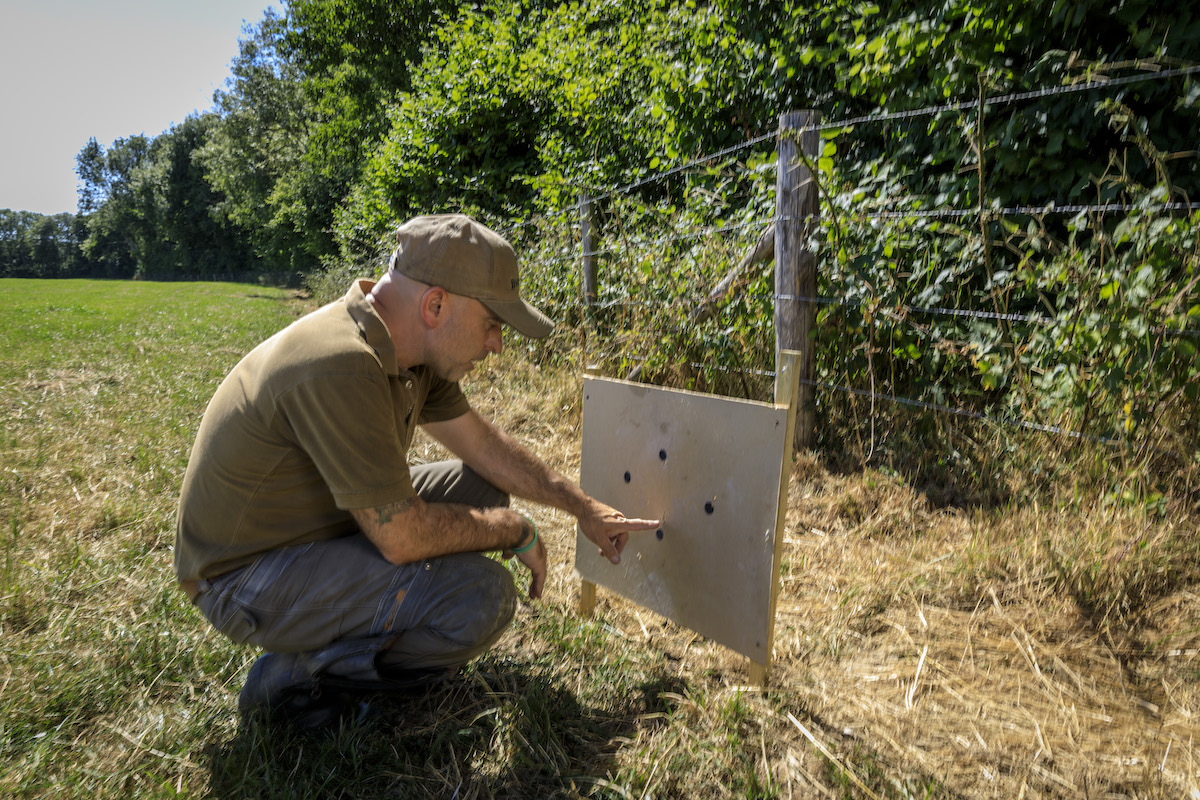
How do the rounds perform over long ranges once the respective rifles have been zeroed in?
Utmost stealth
On a recent outing, I’d also paired my .22 LR with a thermal night scope and it proved almost too easy to walk out to them in the complete darkness, accurately range them with its built-in laser rangefinder and quietly eliminate them with carefully aimed shots, using a little holdover on the further ones. All this was achieved with the utmost stealth.
When comparing the two calibres there is no real winner, with both having their place for certain jobs. Much like golf for that matter; a golfer has a bag of clubs and each has the ability to propel a ball around the course, yet each is better suited to one shot or another.
Financially, you can’t separate rifles of either calibre — that boils down to the brands you choose. I prefer CZ and Tikka and both set you back around £700 to £750 – or slightly more if you’re a southpaw, like me.
Certainly, the .17 HMR is a serious tool for everyday pest control, but it can also be a grubby little round, so accuracy and reliability can quickly disappear if the rifle isn’t regularly cleaned.
The .22 LR, on the other hand, is very quiet, cheap on ammunition and seems to run faultlessly even if it’s completely neglected for months. Mine is, I’m ashamed to admit.
Would I buy a .17 HMR again? After using this one, yes, undoubtedly. I’d love to own another one. Would it replace my .22 LR? No, there are times when the .22 LR is the perfect tool for the job and no other calibre will do.
So it would seem that, for now at least, the trusty little .22 LR still has a place in every gun cabinet.
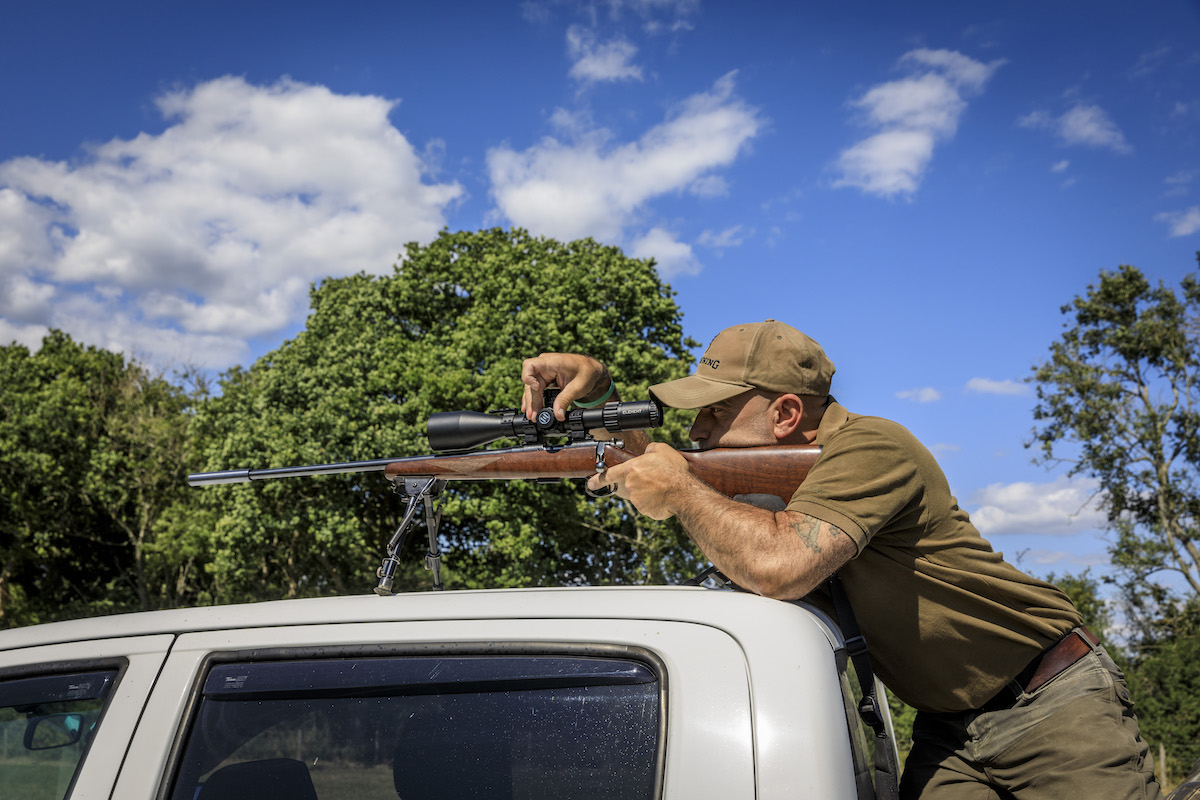
Having put both rimfires through their paces, Mark finds there is no real winner
Head to head
CZ 457 American
- Manufacturer CZ (Ceska Zbrojovka)
- Model 457 American (updated version of Mark’s 452)
- Calibre .22 LR
- Price £668.99
- Importer Sportsman Gun Centre
Tikka T1X MTR
- Manufacturer Tikka
- Model T1x MTR
- Calibre .17 HMR
- Price £750 (£800 for left-handed version)
- Importer GMK
Related articles
Shooting
Shotgun
Let’s bite the bullet
The ban on lead shot for all game shooting is moving apace so it’s time to find the best eco-friendly ammunition that suits you and your rifle
By Time Well Spent
Shotgun
Shotgun buying guides
Starting out? Make sure it fits
If you’re buying your first clay gun, the right fit takes precedence – not good looks, the brand your mate’s got or even price – warns Paul Austin
By Time Well Spent
Manage Consent
To provide the best experiences, we use technologies like cookies to store and/or access device information. Consenting to these technologies will allow us to process data such as browsing behavior or unique IDs on this site. Not consenting or withdrawing consent, may adversely affect certain features and functions.
Functional Always active
The technical storage or access is strictly necessary for the legitimate purpose of enabling the use of a specific service explicitly requested by the subscriber or user, or for the sole purpose of carrying out the transmission of a communication over an electronic communications network.
Preferences
The technical storage or access is necessary for the legitimate purpose of storing preferences that are not requested by the subscriber or user.
Statistics
The technical storage or access that is used exclusively for statistical purposes.
The technical storage or access that is used exclusively for anonymous statistical purposes. Without a subpoena, voluntary compliance on the part of your Internet Service Provider, or additional records from a third party, information stored or retrieved for this purpose alone cannot usually be used to identify you.
Marketing
The technical storage or access is required to create user profiles to send advertising, or to track the user on a website or across several websites for similar marketing purposes.

